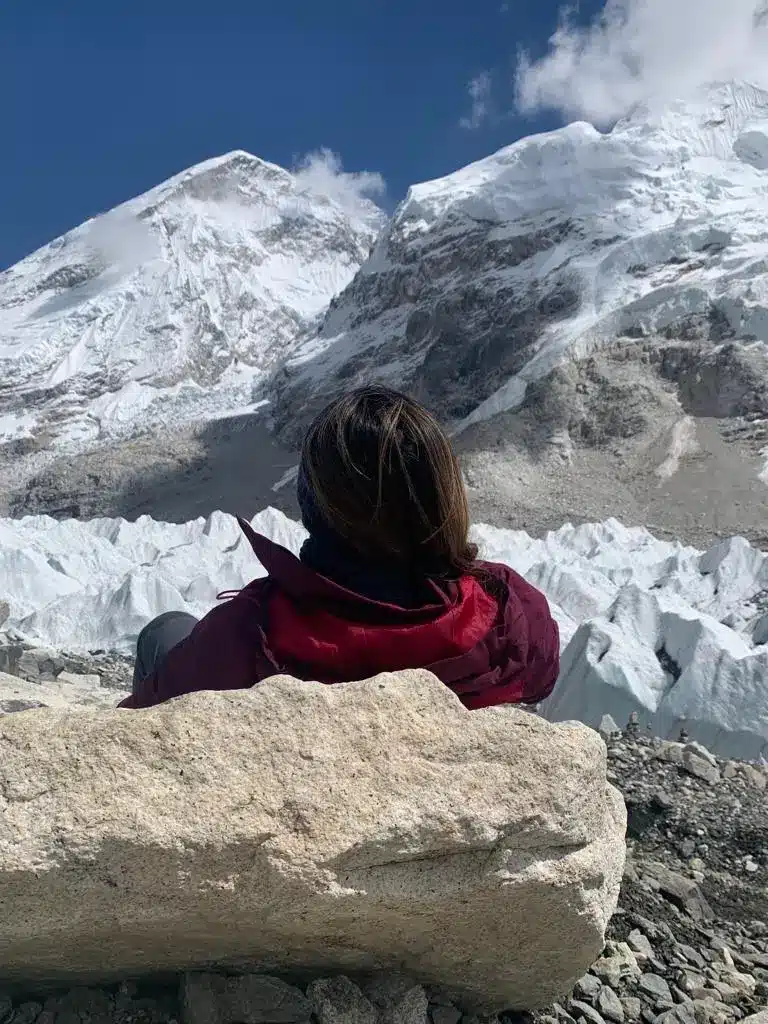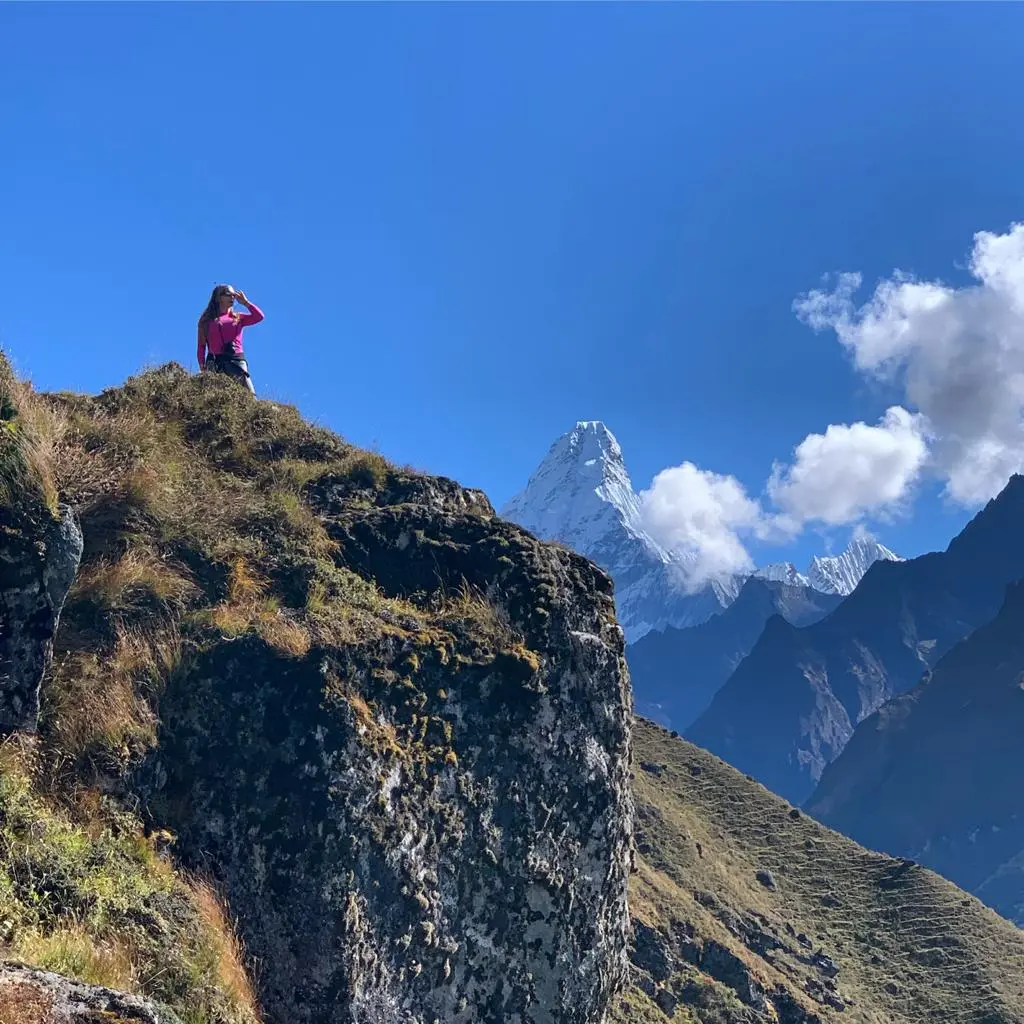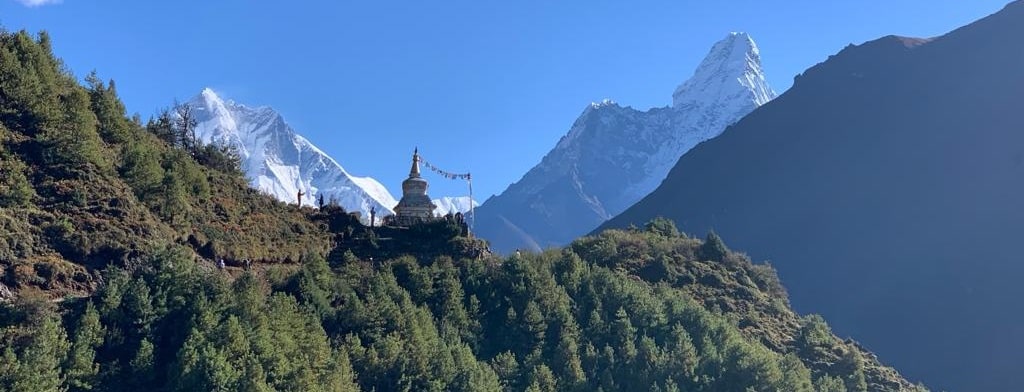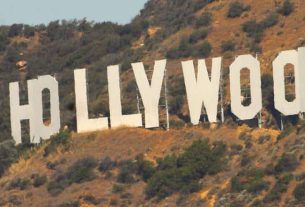On October 12, 2023, I arrived at Everest base camp in Nepal, the culmination of a 16-day trek through the Himalayas.
Let me tell you what I saw.
The south face base camp is located at 5,364 meters above sea level. It is the place where climbers spend weeks acclimatizing and preparing to try to reach the summit. It is the furthest that almost everyone who inhabits this planet will be able to go. More precisely, just over 6,300 people have reached the top of Everest, some more than once, which totals almost 12,000 summits since the first ascent in 1953.
Reaching the summit of Everest, at 8,858 meters, is a feat achieved by approximately 0.00008% of the global population.
What is Everest Base Camp and the Khumbu Valley like?
The Khumbu Valley, home to Mount Everest and other mountains above 8k, is a place of extremes. As beautiful as it is hostile. Then you think that, from base camp, the mountain is there, at your feet, right? It is not. Everest is not even visible from the camps.
It rises from a massif of rocks covered by the Khumbu Icefall, along with other giants, Nuptse and Lhotse. To start approaching the walls of the most famous mountain in the world, you must first cross the access gate to it: the waterfall.
The Khumbu Icefall is seen by many as the most dangerous section of the ascent, unstable and unpredictable. Large pieces of ice break off without warning. There are constant avalanches that sweep away everything in their path. Overcoming it requires crossing a labyrinth of cracks in the glacier, known as crevasses. These are obstacles that any mountaineer faces with deep respect.
In each Everest climbing season, heroic work precedes the arrival of Western climbers. Sherpas, who are not just any Sherpas, fix the support ropes for the ascent and “sew” metal ladders over the waterfall, allowing the safest crossing possible. They are known as “icefall doctors”.
But there’s not much to fix in nature. All the doctors can do is treat her well.

Everest and its two faces
Everest is not the most beautiful mountain, nor the most technically demanding. It has two faces – to the south, in Nepal, and to the north, in Tibet. It also has two halves. One is a dream; the other, fetish. More purist mountaineers lament that the greed of commercial expeditions has desecrated a sacred place. Sagarmatha – the mother goddess, among other meanings attributed to the Nepalese name of Everest – must not be pleased.
She has her reasons. In the congestion of the death zone, above 7 thousand meters, there are many unprepared people waiting for death to arrive, as Raul said. With so many mobile traps that cut through the Khumbu Cascade, you might be surprised by the fact that more than half of the deaths happen on the way down. Mountaineers die from exhaustion.
Facing the glacier, Lhotse, Nuptse and, just behind, the enormous pyramid at the top of Mount Everest, I leaned back on a rock that, I remember the feeling well, had the comfort of a cinema seat. I spent a lot of time there, alone, thinking about how someone, one day, had the great idea: “look, I think we can get there”.
Can you get there? In what way? At what cost?

True, nowadays the price is a few tens of thousands of dollars. Successful expeditions suggest that with physical fitness, a small fortune, and a private team of Sherpas and guides, anyone can reach the summit—if the mountain permits. From my movie theater, after what I saw, I have my doubts. I doubt myself: would I be able to do it?
It turns out that these people, one way or another, achieve the unattainable. I saw. And this logic can only dissipate in the face of a leap of faith. With an enormous will, the size of the largest mountains on the planet.
From my stone armchair, just above base camp, I saw Everest. But I saw other things too – sacrifice, courage, death and memory. The cost of aiming so high is rebirth.
* Silvia Paladino is a journalist, writer of non-fiction narratives and editor of Destino Paralelo, a travel narrative project that uncovers remote places on the planet.
Sign up for our newsletter

Sign up for our newsletter and stay up to date with exclusive news
that can transform your routine!
Warning: Undefined array key "title" in /home/storelat/public_html/wp-content/plugins/link-whisper-premium/templates/frontend/related-posts.php on line 12
Warning: Undefined array key "title_tag" in /home/storelat/public_html/wp-content/plugins/link-whisper-premium/templates/frontend/related-posts.php on line 13




